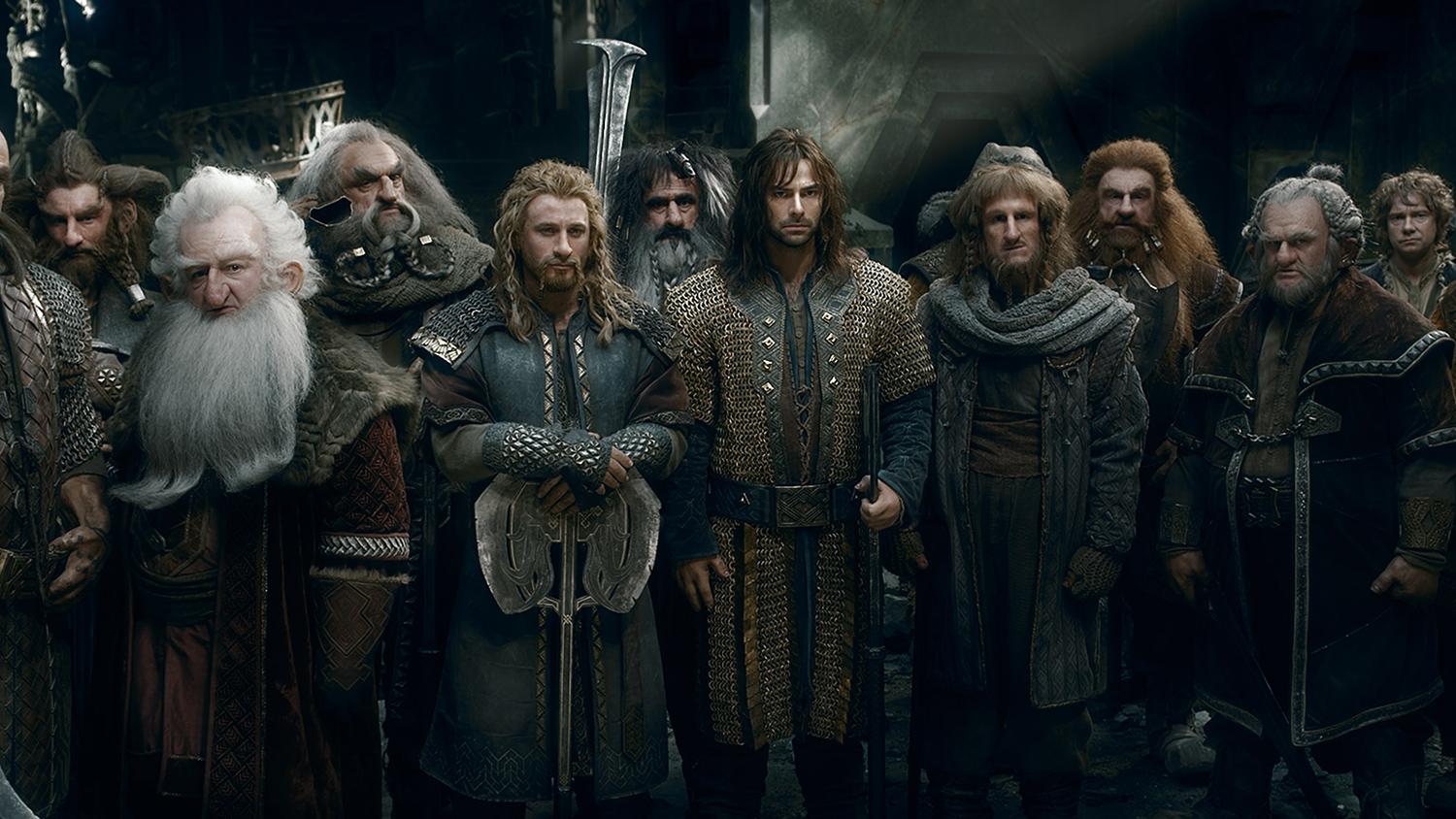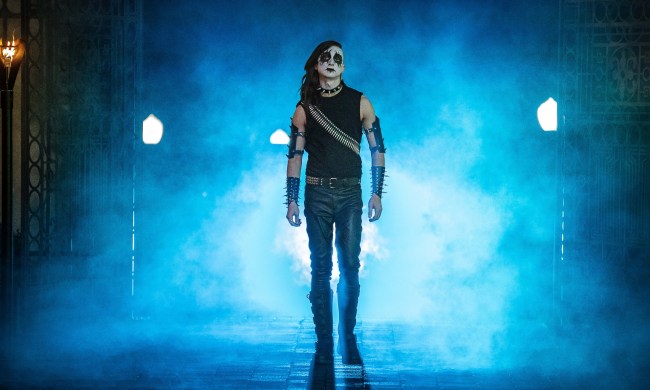At long last, Peter Jackson’s final moments in Middle-earth are upon us — and not a moment too soon.
The third and concluding installment in Jackson’s The Hobbit trilogy, The Battle of the Five Armies, hits theaters this weekend, bringing Bilbo Baggins’ unexpected journey to a close. But was this really Bilbo’s story to begin with? It certainly should have been, but something changed along the way — no later than the decision to blow up J.R.R. Tolkien’s tightly-paced children’s book into a full-blown three-parter, if not earlier. Despite its title, The Hobbit is not about an unassuming burglar from Bag End. Indeed, it’s hard to know what it’s about at all.
The Battle of the Five Armies is two hours and thirty minutes of pure action
Here’s what we can say: The Battle of the Five Armies lives up to its title. It’s two hours and thirty minutes of pure action, as various factions from across Middle-earth wage war upon one another. Man, elf, dwarf, and orc all bring their might to bear, bringing vicious violence to the forefront for just about the entire movie’s runtime.
The action picks up immediately where The Desolation of Smaug left off, with the winged worm bringing fire and fury upon the unfortunate souls still lurking in Laketown. Following the big showdown with Smaug, the focus shifts to the new status quo surrounding the Lonely Mountain — specifically, that Thorin Oakenshield is a greedy, awful little man.

Much like anyone who comes into contact with the precious one ring, Thorin succumbs to the corruption of his reclaimed wealth now that he’s back in control of the lost city of Erebor, with all of its riches at his fingertips. All of it, save for the Arkenstone, the great gem that Thorin’s royal ancestors once held so dear. Mad with power and obsessed with finding his treasure, Thorin proves himself to be a singularly minded and selfish fool, refusing to treat with Bard the Bowman and Thranduil of the Mirkwood, despite their attempts at diplomacy.
With Thorin so hellbent on keeping man and elf alike away from his riches, he’s completely unprepared when one-armed orc Azog and his army come marching upon the Lonely Mountain. Unlike the dwarves, elves, and men, the orcs lust after only one thing: blood.
Where’s Bilbo in all of this? Good question. He weaves in and out, but by and large, he’s invisible, as though he slipped on his precious ring. It’s an incredible shame, too, because Martin Freeman’s genial hobbit is far and away the highlight of these overstuffed films. But his prominence was doomed the moment Jackson and his compatriots decided to stretch Tolkien’s thin tale across three long movies, using ancillary material from Tolkien’s appendices and The Silmarillion to pad things out for no real reason at all.

Really, look no further than the Gandalf storyline to see where the Hobbit films veered far out of control. In Desolation of Smaug, the wise wizard stalks off on a side quest to battle the Necromancer, the shadowy force of evil who will cause all kinds of problems for Middle-earth in a trilogy of a different, better color. The story wraps up about 30 or 40 minutes into Battle of the Five Armies, amounting to absolutely nothing of further use.
Everyone loves Gandalf, and rightfully so, but his side quest adds zero to the narrative; keeping him offscreen, only to have him show up right before things with Thorin get too tense, would be a much more impactful way to use him… as it was in Tolkien’s original story. Instead, we’re left with a movie that spends most of its time on similarly unnecessary sub-plots, like the love story between sexy elf Tauriel and sexy dwarf Kíli, the budding leadership of Bard over Laketown, and the slithering schemes of slimy Alfrid, among other distractions. Bilbo gets just as much screen time as these stories, if not less.
Call it whatever you want — just don’t call it The Hobbit.
As for the action itself, The Battle of the Five Armies is creatively choreographed and paced, but that familiar backhanded compliment keeps coming to mind: It’s the best video game you’ll never play. The use of CGI is so heavy-handed, the practical effects all but eradicated, completely missing any of the Middle-earth charm of the original Lord of the Rings trilogy.
While the Hobbit movies are harmless enough, insofar as they (hopefully) won’t disturb the legacy of the Lord of the Rings trilogy, they’re also depressing. There are so many reasons why Jackson’s second trip to Middle-earth could have been worth the effort. He knows the world inside and out, he has a phenomenal leading man in Martin Freeman, a strong supporting cast led by Richard Armitage, and returning players like Ian McKellen who actually have roles in the original Tolkien novel. But Jackson veers so far away from the source material, by overdoing it on other source material, that we’re left with three hollow movies that don’t have any apparent reason to exist, outside of capitalizing on Lord of the Rings nostalgia, 10 years later.
Call it The Lord of the Rings: The Early Years. Call it The War for Middle-earth. Call it whatever you want — just don’t call it The Hobbit. That’s not what these movies are, especially this obnoxiously over-the-top finale.
The Hobbit: The Battle of the Five Armies is in theaters now.
(Media © Warner Bros. Entertainment Group)






